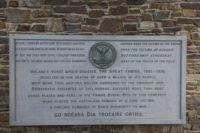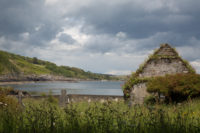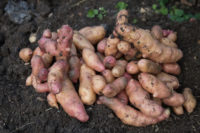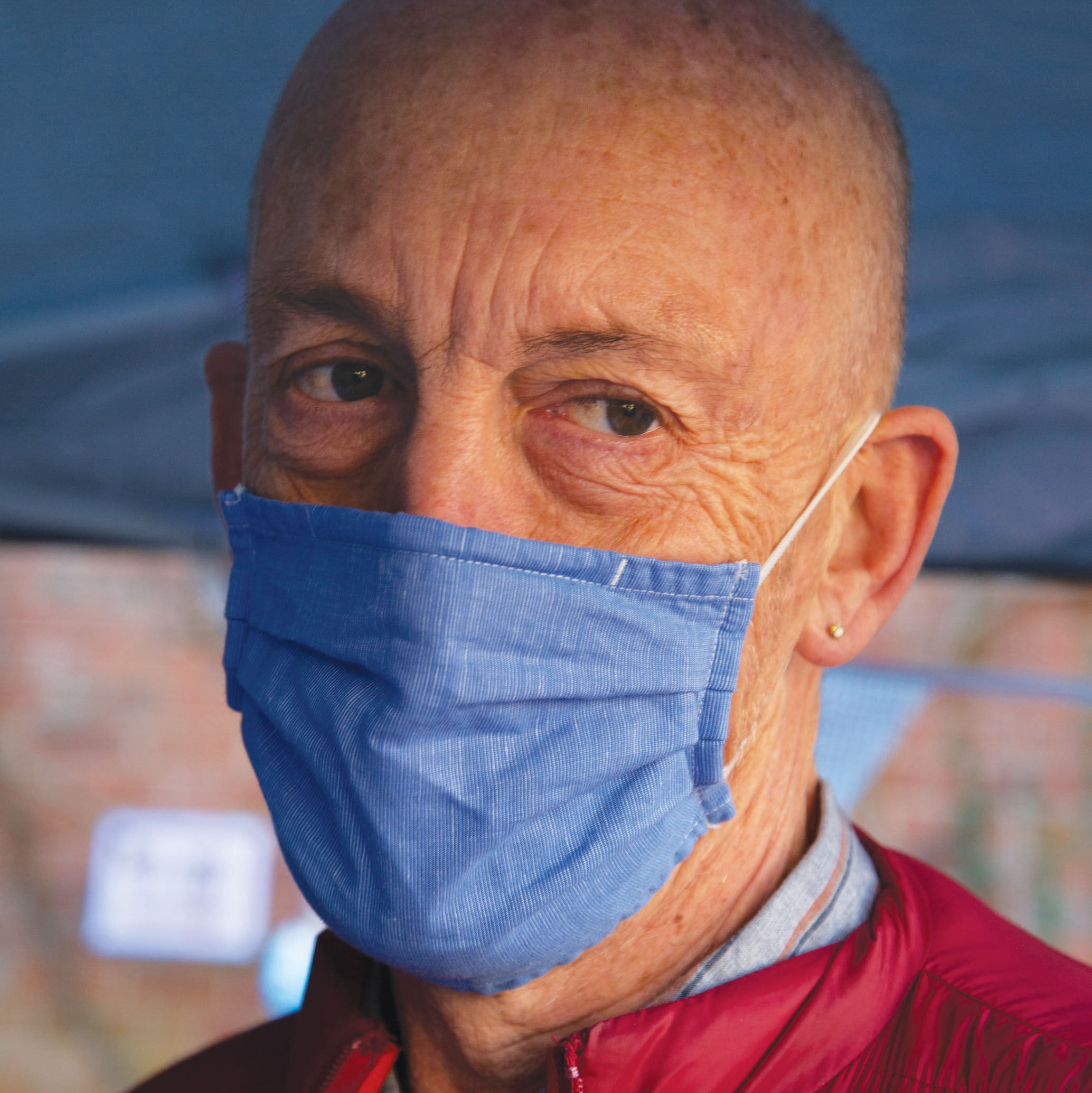Famine and feast: the potato and family history
I have mentioned before (Myths, stories and adventures in the Irish ‘Sky Garden’ 27 June 2019) that the Hegarty side of the Muck family hail from Skibbereen in Co Cork. Skibbereen was a centre of the Great Famine of 1845-50. There is a very moving exhibition on the impact of the famine in the Heritage Centre on Upper Bridge Street, and a famine trail round the town which ends up at the Abbeystrewery Cemetery where an estimated 8-10,000 victims are buried in pits.  Almost one third of the 100,00 population of the Skibbereen area lost their lives during those terrible years, with many more forced to emigrate, and the town became synonymous with the suffering of people across Ireland after it was widely publicised in the famous stark drawings of James Mahoney for the Illustrated London News.
Almost one third of the 100,00 population of the Skibbereen area lost their lives during those terrible years, with many more forced to emigrate, and the town became synonymous with the suffering of people across Ireland after it was widely publicised in the famous stark drawings of James Mahoney for the Illustrated London News.  The cause of the famine in the first place was an over-reliance on a single variety of potato by an extraordinarily impoverished populace. When it got blight and the potatoes rotted in the ground there was nothing to fall back on, and the British state was completely unprepared for, and then unwilling to act to relieve, a famine in its own country (Ireland was then part of Great Britain and Ireland, post the 1801 Act of Union).
The cause of the famine in the first place was an over-reliance on a single variety of potato by an extraordinarily impoverished populace. When it got blight and the potatoes rotted in the ground there was nothing to fall back on, and the British state was completely unprepared for, and then unwilling to act to relieve, a famine in its own country (Ireland was then part of Great Britain and Ireland, post the 1801 Act of Union).
But the Hegarty’s survived. How? Well the answer is perhaps counter-intuitively, the potato. The family story is that during the Famine people around Skibbereen were banned from planting potatoes from their own seed because it would be blighted stock and would itself fail, while spreading the spores to other potato crops. But Michael Hegarty (b c1805) hid a sackful in a shed,  and then planted them in a field in a very isolated valley out beyond Castlehaven. News got out of this illegal stash, and he was instructed to reveal the location of the field where these potatoes were. But by that time they were up and thriving, never caught the blight, and went on to produce an excellent crop; a crop which saw the family through the famine.
and then planted them in a field in a very isolated valley out beyond Castlehaven. News got out of this illegal stash, and he was instructed to reveal the location of the field where these potatoes were. But by that time they were up and thriving, never caught the blight, and went on to produce an excellent crop; a crop which saw the family through the famine.
I remember this story every autumn when bringing in my own (unblighted) crop – which of course is nowhere near the staple food that it was to my ancestors. But it is a reminder of the narrow path we tread between feast and famine, one which in this year of an excellent harvest, is all the more powerful for being at a time of global sadness and death from another invisible airborne grim reaper.
But it is a reminder of the narrow path we tread between feast and famine, one which in this year of an excellent harvest, is all the more powerful for being at a time of global sadness and death from another invisible airborne grim reaper.

